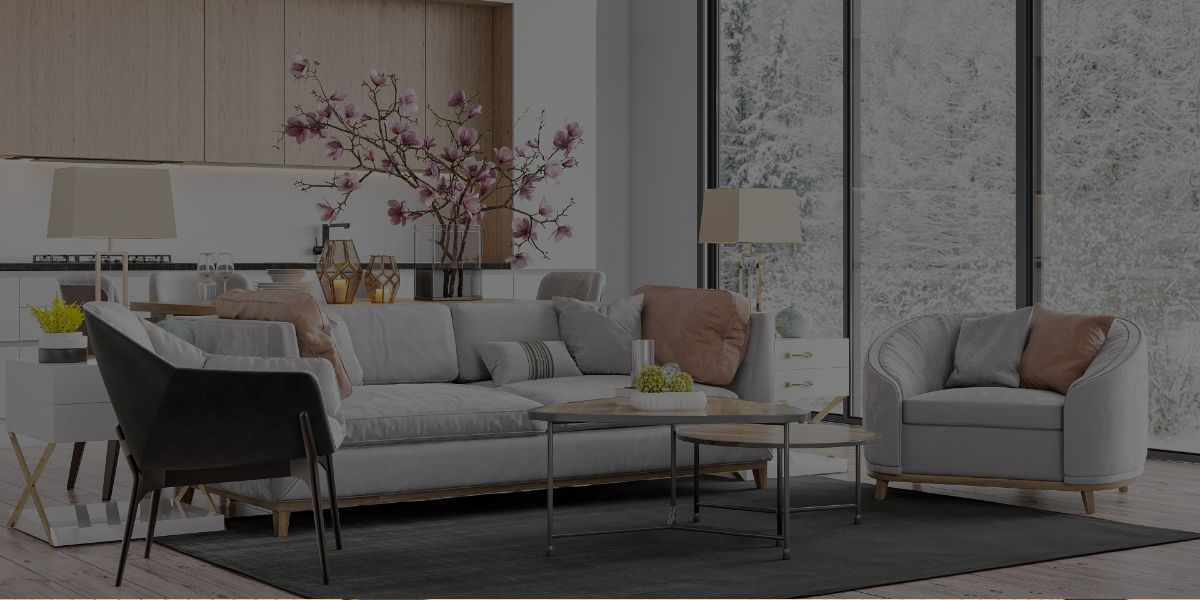Are you looking to stage your home for sale, but don’t want to break the bank? Home staging, while super important, does NOT have to cost a fortune… And that’s why we’re here to offer you 30 tips for home staging on a budget!
From creating an inviting atmosphere with color and lighting to utilizing multipurpose furniture and decluttering – these tips will help you stage your home for sale without setting you back financially.
Read on to find out how easy it can be to make your home look like it belongs on the cover of a magazine!
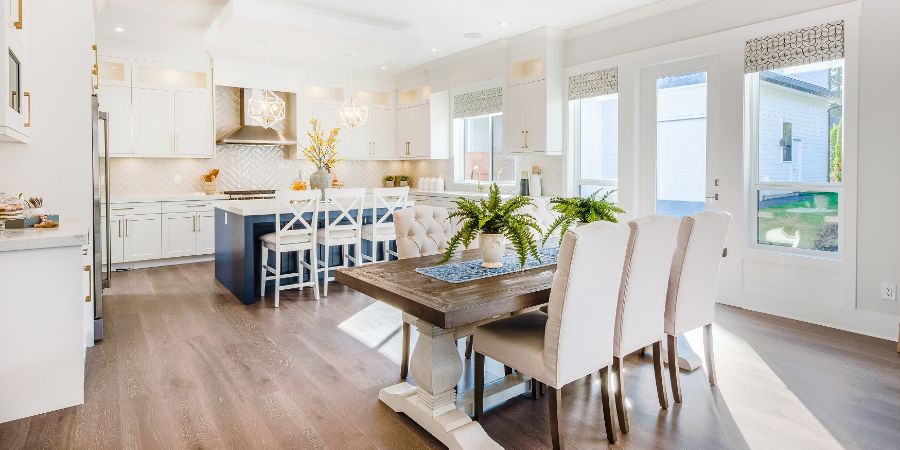
30 Tips for Home Staging on a Budget
Tip #1: Create an inventory of your home.
Start by making a list of the features that you like about your home, as well as any areas where improvements can be made. Furthermore, record items that are outdated or need to be replaced. You should also make note of anything that may be used as props.
Doing this will help you determine what you need to focus on, what can stay, and what needs to go!
Pro Tip: Knowing was NOT to do is just as important as knowing what to do. So, make sure you’re aware of these 25 major home staging mistakes to avoid!
Tip #2: Do a thorough, deep cleaning.
When it comes to home staging, it’s important to start off with a clean slate. Therefore, before you begin staging, take the time to deep clean your home first!
This includes (but isn’t limited to) washing walls, baseboards, windows, light fixtures and appliances. Plus, you should also wipe down all surfaces and polish any metal that may be in the house.
If you need some help with this step, Better Homes & Gardens offers some excellent advice for deep cleaning EVERY room of a house!
Tip #3: Declutter.
When it comes to home staging on a budget, decluttering will have one of the BIGGEST impacts! This is because by removing excess furniture, knickknacks, and other items from your home, you can make it look larger.
Plus, decluttering will also help create a more inviting atmosphere – one that prospective buyers are sure to appreciate! So, start by removing any furniture, ornaments, and other items that don’t belong in the home.
This will open up your home and make it much easier to stage!
Tip #4: Depersonalize.
When selling a home, you need to create a space that buyers can envision themselves living in. That’s why depersonalizing your home is so important!
In a nutshell, depersonalization refers to removing personal items like photos, artwork, heirlooms, and other things that make the space feel too much like you. By doing this, you’re making it easier for potential buyers to imagine what their life in this space would look like… Without seeing reminders of your life there.
Tip #5: Skip the storage unit.
If you’re looking to stage your home on a budget, then you don’t want to waste any money on unnecessary items. And that includes storage units! (Fun fact: the average cost of renting a storage unit in the United States is around $180 a month.)
So, rather than buying a storage unit, try to make use of the space you already have. This can be done by placing furniture strategically – and doing this won’t cost you a penny!
Now, what happens if you have too many things that need to be removed from the house… But nowhere to put them in the meantime?
Don’t worry! You can rent a moving truck for a day and temporarily store the items somewhere else (such as a friend or family member’s house). This is a much more cost-effective solution than renting a storage unit because it will only cost you a fraction of the price – and you won’t need to commit to long-term payments!
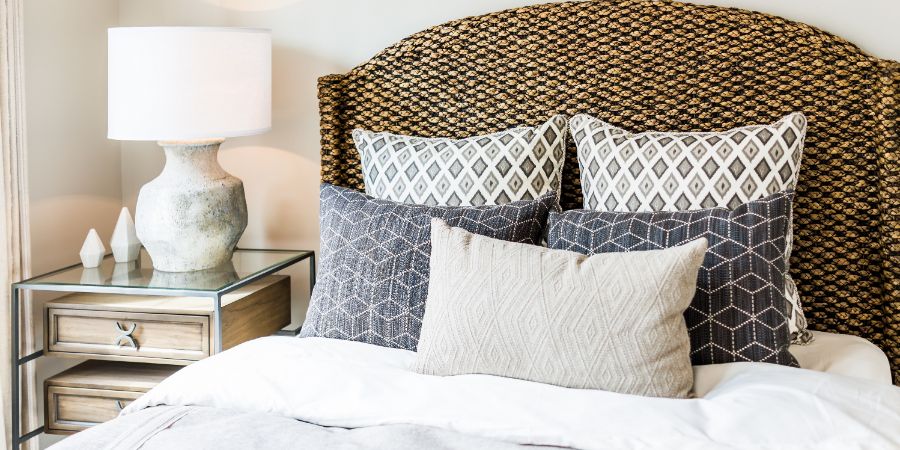
Tip #6: Opt for maximum (or completely negative) space on flat surfaces.
When staging your home, you should aim for maximum – or completely negative/open – space on flat surfaces. This means that the most visible furniture pieces in a room (e.g. sofas, tables, and desks) should be relatively uncluttered and free of excess items.
Why?
Well, this will help create a sense of openness and spaciousness in the room. Plus, it will also make it easier for potential buyers to get a better sense of the space without being hindered by things like books, magazines and other clutter.
Tip #7: Keep your paint colors neutral.
As a general rule of thumb, you should always opt for neutral paint colors when home staging. This is because using vivid or overly bright colors can distract buyers from the room. Not to mention, it can make it difficult for them to imagine themselves living there.
Moreover, sticking with neutral colors also makes it easier for prospective buyers to envision how they would decorate the space – without being overwhelmed by more whimsical hues. So, the best thing you can do is to choose colors that create a harmonious atmosphere – and avoid those that are too loud.
Now, if your walls aren’t currently a neutral color, how can you go about repainting them in the most budget-friendly way?
Good question!
The answer is simple: opt for low-VOC paints. These types of paint are more eco-friendly, but they’re also much cheaper than conventional paints. So, you can get the job done without breaking the bank!
Tip #8: Throw in splashes of vibrant colors for accentuation.
While you want to keep your walls painted in neutral colors, that doesn’t mean you can’t add some personality to the space via color!
This can be done by incorporating vibrant colors here and there in the form of pillows, throws, rugs, and accessories. The key is to not overdo it! Rather, choose just one or two colors that you can use as accent colors throughout the home.
For instance, if your living room walls are painted in a neutral beige color, then you could add pops of red with a rug and some accent pillows. This will help to create a more inviting and cozy atmosphere – without overwhelming potential buyers with too many colors.
Pro Tip: Discover the 5 secrets that all professional Color Consultants want YOU to know when adding color throughout your home!
Tip #9: Put slipcovers over any old furniture.
If you have any outdated or worn furniture pieces in your home, don’t fret! You can easily update them with the help of slipcovers.
These are great for covering up old furniture and making them look more modern and stylish – all without spending a fortune. Plus, they come in a variety of fabrics that you can choose from. Meaning, you can customize the look of your furniture without having to buy new pieces.
Tip #10: Make your home smells pretty.
The last thing that you want is for potential buyers to be distracted by unpleasant odors! So, it’s important that you make sure your home smells nice and inviting.
One way to do this is to simmer cinnamon sticks or citrus peels on the stovetop with some water. Not only will this help to fill the home with a pleasant aroma, but it also won’t disrupt your budget.
Another great option is to buy fragrant candles or diffusers. These can be found at most home goods stores and they won’t break the bank either!
Tip #11: Rearrange your furniture.
This is definitely one of the easiest (and cheapest) tips for home staging on a budget! After all, you don’t need to buy anything if you already have furniture in the home.
The key is to rearrange the furniture in a way that makes each room feel more spacious and inviting. This can be done by pushing furniture away from walls and creating conversation areas with couches, chairs, and tables.
Doing this will not only help to create a more inviting atmosphere, but it can also help prospective buyers visualize themselves living in the space.
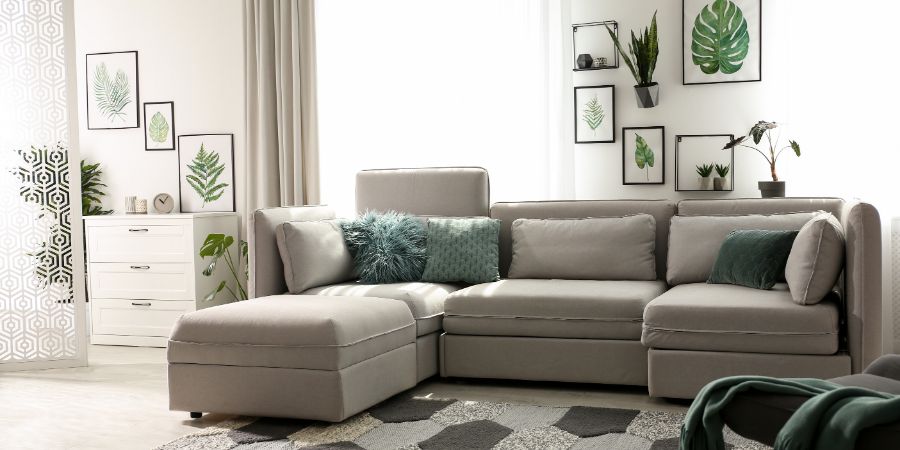
Tip #12: Add strong vertical lines to make your rooms appear taller.
The next tip for home staging on a budget is to add strong vertical lines to make your rooms appear taller.
One way to do this is by hanging floor-length curtains or mirrors. These items can easily be hung up with hooks and they will help draw the eye upward – making the room look more spacious in the process.
Another way you can do this is by adding tall bookshelves or cabinets to the room. This will create an illusion of height while also providing ample storage space!
Tip #13: If you have pets, no you don’t.
For those of you who have pets, it’s important that you hide any evidence of them before potential buyers come to tour your home! Otherwise, they may be put off by the traces of fur – or worse, the smell of your pet (e.g. litter boxes).
(Not to mention, you never know if a potential buyer is allergic to pets).
So, you should store away all of your pet’s food and toys. From there, vacuum, sweep, and/or mop the floors thoroughly, and be sure to keep pet beds and litter boxes out of sight. You may also want to invest in an air purifier to help remove any pesky pet odors.
Tip #14: Add some vignettes.
Never heard of vignettes?
Basically, they are small collections of items that come together to create a visually appealing display. In terms of home staging, vignettes can help add a personal touch to each room – without having to break the bank.
The great thing about vignettes is that you don’t need to buy a lot of items to make them! All you really need are a few small items (think: books, plants, candles, etc.) plus a tray or basket and you’re set. Plus, you can also create vignettes with items you already own!
Related: Here are 100 of the BEST budget-friendly decor ideas for your home!
Tip #15: Make use of bed-in-a-bag ensembles.
Bedrooms are one of the most important spaces in a home. As such, it’s essential that you make them look and feel inviting to potential buyers!
One way to do this on a budget is by investing in bed-in-a-bag ensembles. These are sets of matching bed linens (e.g. comforter, sheets, pillowcases, etc.) that come in a variety of styles and colors.
These sets are great because they’re relatively inexpensive while also providing an easy way to make any room look more inviting. Plus, you can always find additional items (e.g. throw pillows, blankets) to accessorize the ensemble if needed!
Tip #16: Maximize natural lighting.
Another great tip for home staging on a budget is to use natural lighting to its fullest! You can do this by keeping windows clean and free of obstructions. Also, you can mirrors to reflect natural light throughout the space.
When your home is well-lit, it will appear cleaner and more inviting. In turn, this will make potential buyers feel more comfortable. Plus, you won’t have to worry about investing in expensive lighting fixtures!
Tip #17: Pick the right lightbulbs.
Now, in some cases, maximizing natural lighting won’t be an option. In these cases, you’ll need to consider investing in some lightbulbs.
The key here is to pick the right type of bulb. We recommend going for warm, yellow-toned bulbs to create a cozy atmosphere. Furthermore, you should also look for energy efficient bulbs that will help save money on electricity bills down the line.
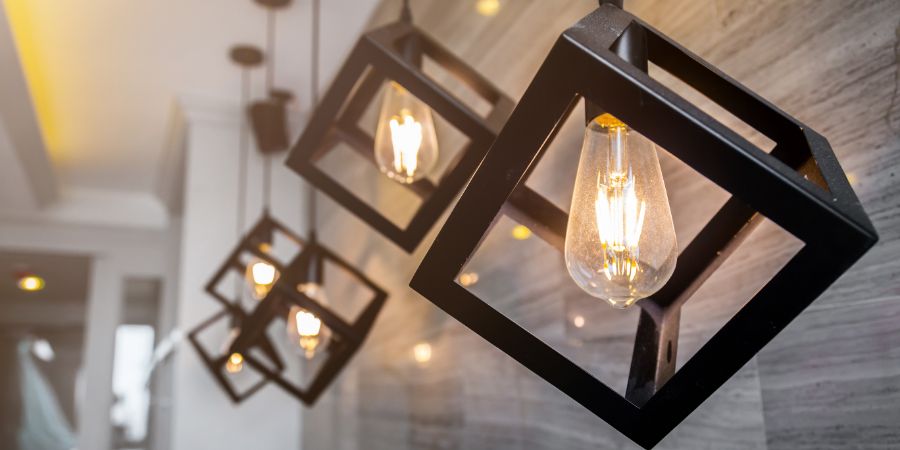
Tip #18: Hit up yard sales and thrift stores.
Shopping for home staging items doesn’t have to be costly. To save money, you should look out for yard sales and thrift stores in your area!
Yard sales are great because you can often find furniture and decor items for a fraction of the price. Similarly, thrift stores offer gently used items that won’t break the bank.
And the best part? You can find a lot of unique items at these places that you won’t find anywhere else!
Tip #19: Get your DIY on.
DIY projects are a great way to add a personal touch to your home staging efforts. Plus, they can also be relatively inexpensive if you know what you’re doing!
For example, you could paint an old piece of furniture or build some wall shelving out of wood. Just make sure that the project looks neat and is something that potential buyers will appreciate.
Pro Tip: Why not try out these 6 DIY IKEA furniture hacks?
Tip #20: Make your house look bigger via mirrors.
If your house is feeling a bit cramped, or you live in a relatively smaller space as it is, then you should consider investing in some mirrors! Placing mirrors around the house can make your space look larger and brighter.
This is a great trick to use if you’re trying to show off an open concept. Plus, it’s relatively inexpensive compared to other home staging techniques! On average, buying a mirror brand-new will set you back around $50. However, you can easily find mirrors for a fraction of the cost at yard sales, thrift stores, or even online marketplaces.
Tip #21: Get rid of anything that looks outdated.
You probably recall that we touched on this back in Tip #1. However, this tip is too important to not mention again!
Getting rid of anything that looks outdated – such as old furniture or wall decor – will do wonders for your home staging efforts. Potential buyers want to see a modern, up-to-date space. So, if there’s anything in your house that screams “old”, then you should get rid of it!
Not sure where to start? Donate the unwanted items or look into selling them online. This way, you can make a bit of extra money and help declutter your space at the same time. Win-win!
Tip #22: Organize your closets.
Organizing your closets can make a HUGE difference when it comes to home staging. Plus, since you’re (mostly) working with what you already have, it’s one of those home staging strategies that has little to no impact on your finances!
Remember: potential buyers like to see that the house is well-maintained, and an organized closet will definitely give off this vibe! You can always invest in storage bins or baskets if you don’t already have them. These items are relatively inexpensive and can instantly make your closet look much neater.
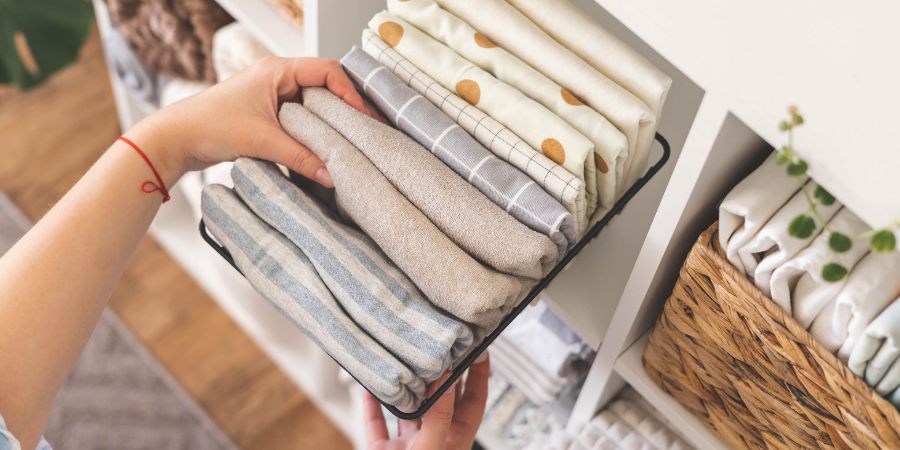
Tip #23: Get free advice from a real estate agent about home staging on a budget.
Obviously, real estate agents know the real estate market inside out. So, if you want to learn more about home staging on a budget, then you should consider reaching out to one.
Most agents are more than willing to give you their professional opinion on how to stage your home without breaking the bank. After all, they want potential buyers to be interested in your house!
Plus, getting advice from a real estate agent can sometimes be free of charge – and it’s a great way for you to gain some insight into the home staging process.
Tip #24: Upgrade your cupboards.
Cupboards can become quite worn and outdated over time. Thus, it’s important to make sure that yours look presentable if you want to successfully stage your house.
Upgrading your cupboards might be one of the more expensive home staging strategies on this list. However, there are a few tips that can help you save some money here:
- Replace cupboard doors with new ones;
- Try some DIY painting techniques;
- Install low-cost hardware like new handles;
- Attach some decorative trims;
- Add some extra storage, etc.
Whatever route you decide to take, making sure that your cupboards are in good condition is essential when it comes to home staging on a budget.
Tip #25: Take advantage of virtual home staging.
Virtual home staging is a great way to get an idea of what your house might look like once it’s been staged – without actually having to go through the staging process.
Plus, it’s much more cost-effective than traditional home staging! All you need is some basic design software and a few photographs of your house, and you’re all set. This is a great way to get feedback from potential buyers before investing any money into home staging!
Tip #26: Make sure all pathways are cleared.
When potential buyers visit your house, you want them to be able to move around freely. That’s why it’s important to make sure that all pathways – from room-to-room and around furniture – are cleared.
Not only will this help the buyers navigate their way through the house more easily; it will also make the space look much larger than it actually is.
Tip #27: Repurpose and upcycle.
Repurposing and upcycling are two of the most cost-effective home staging strategies out there!
Basically, all you need to do is take something that you already own – like a piece of furniture, for example – and give it an upgrade by adding some new paint or decorations.
Firstly, this strategy will help to spruce up the look of your house. Secondly, it’ll also save you a lot of money in the long run. So, don’t be afraid to get creative and think outside of the box!
Tip #28: Spruce up your lawn.
Did you know that the outside of your home is just as important as the inside? It’s true! In fact, most potential home buyers will make a judgement of your house based on what they see from the outside first.
That’s why you should make sure that your lawn is looking its best by the time potential buyers come over. Mow the grass, trim any shrubs, and add some potted plants or flowers if possible.
These simple touches can have an incredible impact on the overall look of your home! Plus, they’re all relatively inexpensive.
Pro Tip: If you’re new to landscape design, this Beginner’s Guide will teach you EVERYTHING you need to know!
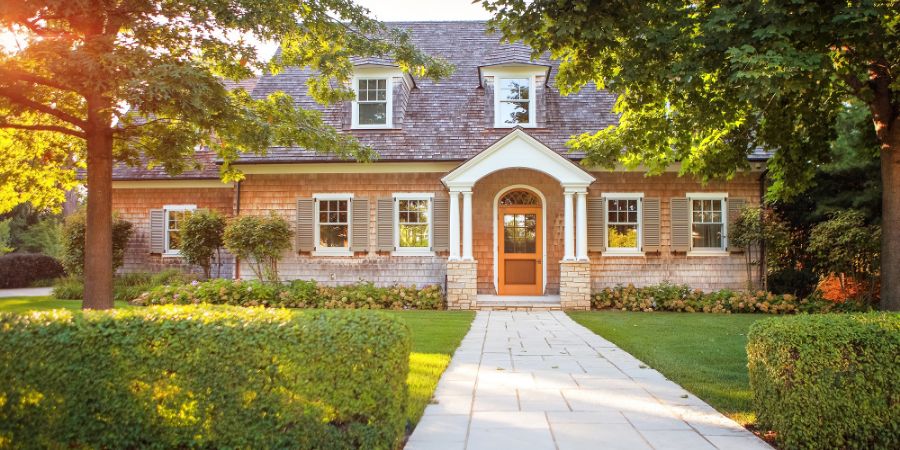
Tip #29: Give your bathrooms a minor facelift.
Your bathroom is one of the most important parts of your home – and it’s also one that can be easily overlooked during the staging process. That’s why you should make sure to give your bathrooms a once-over before potential buyers come to look at your house.
This doesn’t have to be an expensive or time-consuming process, mind you!
For instance, you could do some simple things like replacing the faucet, cleaning the showerhead and taps, and adding a few decorative items to liven up the space.
Tip #30: Hire a professional home stager.
Our final tips for home staging on a budget is simple: hire a professional. Home staging professionals are experts in their field and they know just what needs to be done to make your house look its best.
Plus, they will also have access to a variety of resources that you may not have access to yourself – like furniture rental services, for instance. And what’s more, their connections may provide them with discounts you wouldn’t otherwise have access to!
Now, you’re probably thinking, “How is hiring a professional home stager supposed to help my budget?”
Here’s the thing: hiring a home stager doesn’t necessarily have to be an expensive process – especially if you shop around and look for deals. On average, home stagers charge an hourly rate, which can typically be anywhere from $25 to $100. But when you factor in all of the ways they’ll save you money, you’ll likely end up saving in the long run!
Pro Tip: Alternately, you can instead pay to take a certification course – such as the self-paced, online Home Staging Course offered at QC Design School – and become a home staging expert yourself in as little as 3 months!
Frequently Asked Questions
Finally, let’s wrap things up by addressing some of the most common questions people have about home staging on a budget…
Q: What are the benefits of home staging?
A: Home staging improves the sale of a property in many ways! Firstly, it’s a great way to make your home look more attractive and appealing to potential buyers. Secondly, it can also help you get a higher sale price for your home, as well as make it easier to sell – and in a much shorter timeframe, too!
Q: How much does it cost to stage a house?
A: The cost of home staging will depend on a variety of factors, such as:
- The size and condition of your home;
- What kind of staging services you require;
- Whether or not you choose to hire a professional home stager, etc.
On average, however, most homeowners can expect to spend anywhere from several hundred to a few thousand dollars on staging their home.
Q: Who pays for staging a house?
A: Generally speaking, the homeowner is responsible for the cost of home staging. However, this isn’t always the case and it will depend on your specific situation. For instance, some real estate agents may offer to cover the cost of home staging in exchange for you listing your home with their agency.
Q: Any tips on how to stage a bedroom for cheap?
A: Absolutely! When staging a bedroom on a budget, focus on the small details. Rearrange furniture to make the room look bigger and brighter. Also add a few decorative items, such as plants or artwork, to liven up the space. Finally, make sure that the bed is made and all of the surfaces are clean and tidy.
Q: How much does it cost to stage a living room?
A: Like with any other home staging project, the cost of staging a living room will depend on a variety of factors. Generally speaking, most homeowners can expect to spend anywhere from several hundred to a few thousand dollars on staging their living room. But for those who are super budget-conscious, staging a living room can be achieved for as little as $100 or less!
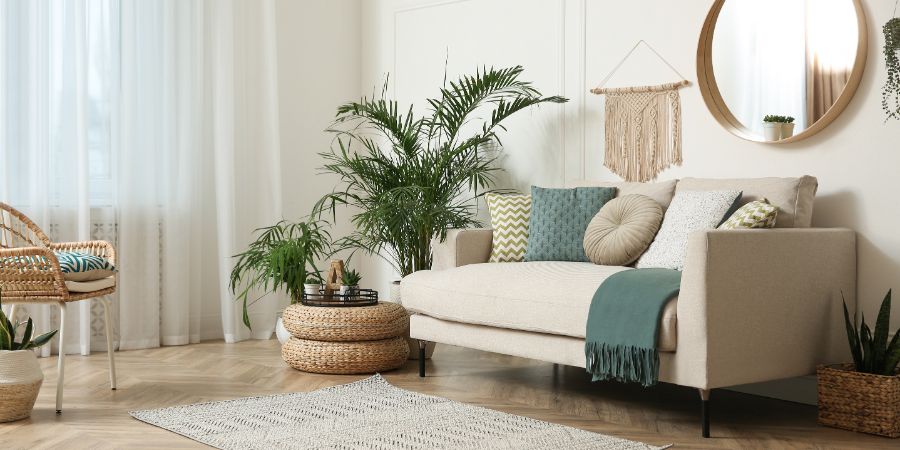
Q: How do I DIY stage my house to sell?
A: DIY home staging can be a great way to save money while still getting the job done right.
Start by decluttering, deep cleaning, and performing any necessary repairs. Then, focus on creating a nice flow to the space and updating any outdated elements. Finally, add some home decor pieces (rented or bought) to give the room a welcoming, polished look.
Q: How do I stage my house for maximum value?
A: To get the most out of your home staging efforts, it’s important to focus on making sure that your house looks and feels inviting.
Start by creating a nice flow between rooms and ensure that all of the furnishings are coordinated. Then, add some personal touches with artwork, plants, rugs, and pillows. Finally, make sure the home is clean and clutter-free. After all, this can go a long way in improving the overall value of your home!
Q: Is staging worth the price?
A: Absolutely! Home staging is proven to help you get a higher sale price for your home, make it easier to sell, and shorten the amount of time it’ll sit on the market. When done right, it can also create an inviting atmosphere that potential buyers will love! Plus, with the right budgeting and planning, home staging can be extremely cost-effective for both homeowners and real estate agents!
Final Thoughts
Home staging on a budget is possible – you just need to be creative and know where to look!
From decluttering, deep cleaning, rearranging furniture, and adding decorative pieces, there are plenty of ways to get your home ready for sale without breaking the bank. With these tips in mind, you’ll be sure to create a warm and inviting atmosphere for potential buyers.
Do YOU have any other tips that we didn’t mention in this list? Drop them in the comments below!
Good luck and happy staging!

